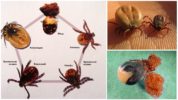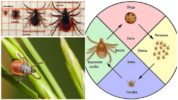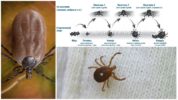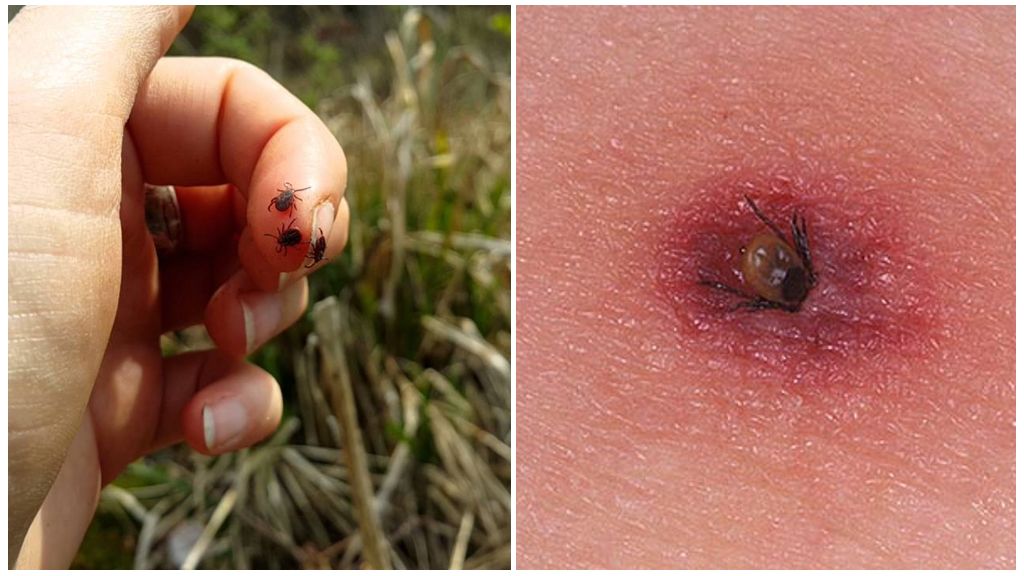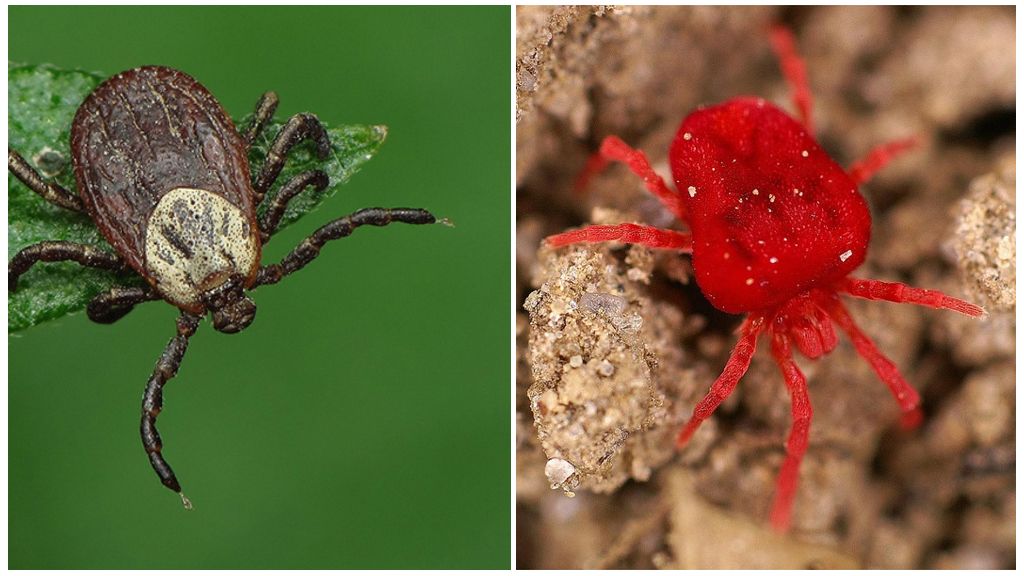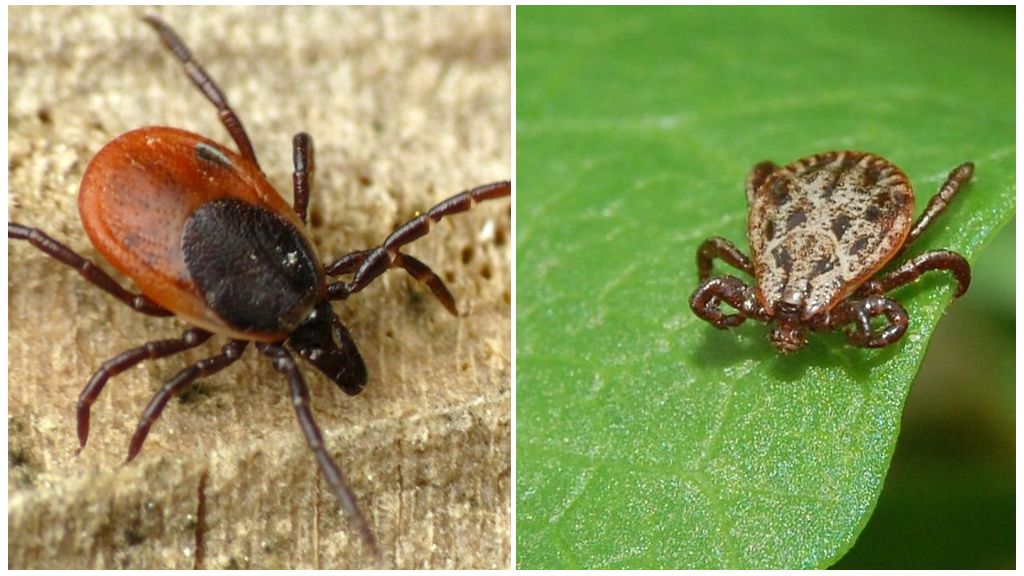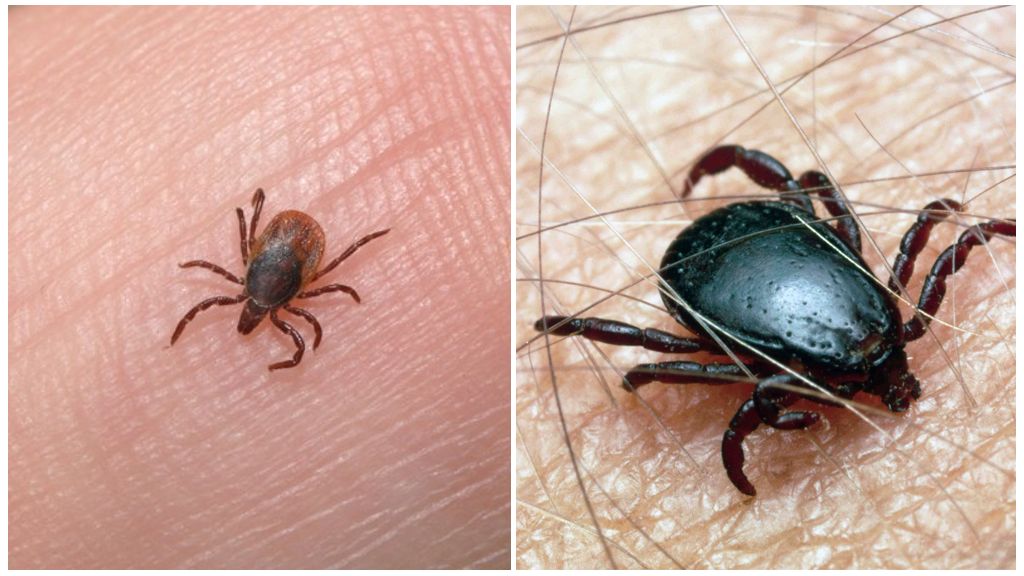- The cycle of development and reproduction of ticks
- Tick development cycle
- Tick Generation Generation
It is difficult to say how ticks multiply, being responsible immediately for the entire subclass. Among the many diverse species, there are those who have developed live births, although most continue to lay their eggs. When talking about the reproduction of ticks, they usually mean the life cycle of the ixodidae, as the most common group of the Akari subclass on the planet. Another plus ixodic - The most typical acaride life cycle. But first you need to touch on the issue of live birth.
Viviparous
This concept is conditional in Akari. There are only two types that have switched to a true live birth. The rest give their body to feed offspring.
After fertilization, such a viviparous female waits for the maturation of eggs and dies. The death of the female falls in the fall, and the eggs winter in the body of the tick. With the onset of heat, larvae hatch from the eggs, which for some time “eat up” the mother, at the same time gnawing their way to the will. The life of posthumously viviparous females lasts only one summer.
Interesting!
As ticks of these species appear, having stocks of food available, there are fewer nutrients in the eggs of posthumous viviparous females than in egg-laying ones.
Rest types of ticks prefer to do without extreme and lay eggs.
Features of reproduction of ixodidae
Ticks multiply on animals right in the process of feeding. The male fertilizes the female while she drinks blood. He climbs onto the abdomen of the female and is fixed with the help of suction cups. He needs such exercises, since the female’s sexual opening, in our view, is in the middle of her body. But this is in the drunken blood of an individual. Normally, the hole is located between the fourth pair of legs and in a hungry arthropod closer to the posterior end of the body.
After fixing on the female, the male immerses the proboscis in the genital opening to enlarge it and moisten it with saliva. The process lasts several hours, during which the male ectospermatophore manages to swell and fill with seed.
Having decided that he worked enough over the girlfriend’s hole, the tick extracts the proboscis, captures its genitals with the chelicera and immerses it in the female. Ticks mate on the principle of "who turned out to be closer", since in most cases the male is capable of only one sexual intercourse. After mating, the male dies, and the female drowns the blood for a few more days.
Twice the male can mate only on condition that there is a second female nearby, and he managed to drink blood before mating.
Interesting!
If there is no male nearby, the female will still lay eggs, but only females will be in the offspring. With the participation of the male, both sexes of ticks emerge from the eggs.
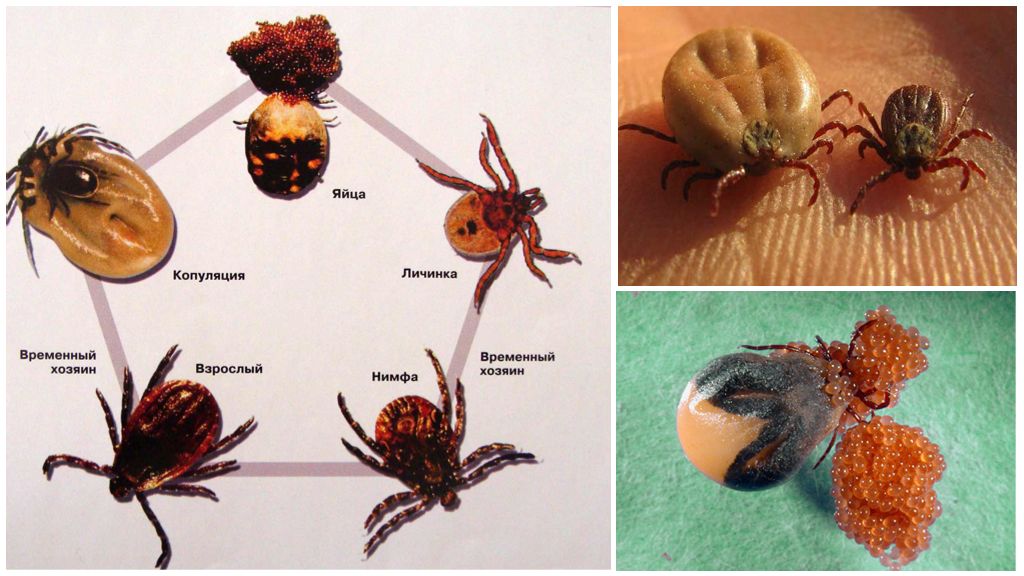
Gender differences of ticks
It is not difficult to distinguish a female tick from a male, as ixodidae and other shell-like ones have chitinous shields protecting the body. In the female, the size of the shield is only ⅓ of the total body area. Unprotected abdomen of red or gray color. In the male, the flap covers the entire back, and the tick has a brown color.
Doctors, answering the question of who is more dangerous, male or female tick, clearly say that male. Since the main sexual difference is that the male sticks for only a few hours, after which it is quickly removed.Noticing a crawling tick, people do not attach importance to it, thinking that it has not yet had time to bite. The female sucks on for several days and is easier to detect.
On a note!
In case of encephalitis ticks the male poses the maximum danger, as it bites quickly and painlessly. When bitten, he can infect the victim. encephalitis, and the person will not know about it.
Life cycle
Tick activity starts when the air temperature rises above 1 ° C. The mating season in ticks occurs in May-June. After this, the fertilized females finish the blood and begin to lay eggs. Tick activity at this time subsides.
On a note!
Since the time of decrease in activity coincides with the onset of summer heat, there is a belief that ticks do not like hot weather.
How many eggs a tick lays depends on its type and life span. A female tick can lay from 100 to 17 thousand eggs in its life. In nature, the tick lays eggs in soft, moist soil. In urban conditions, how it goes. If the female “arrived” in the apartment on the dog and was not seen, she will lay eggs right in the living room. After some time, the apartment will be filled with actively moving transparent larvae 0.5 mm in size.
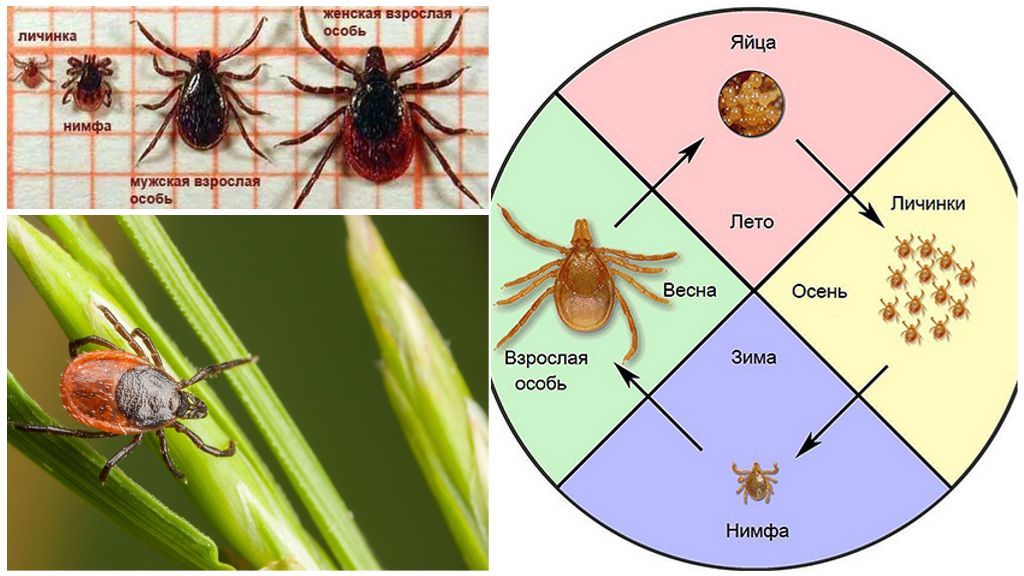
Developmental stages
The maximum number of stages of development in parasites is 4:
- egg;
- larva;
- nymph;
- imago.
Tick eggs are very large in relation to the female. They can be of various shapes, with a smooth or embossed shell.
On a note!
Each stage of parasite development is triggered by a portion of blood. That is, in order to turn from a larva into a nymph, and then into an adult, the tick must once drink blood. In total, these arthropods drink blood only three times in their life.
After some time, depending on the temperature and humidity of the environment, tick larvae emerge from the eggs. These are very small organisms with a size of not more than 0.5 mm. They look almost like adults, but have only 3 pairs of legs. The tick larva does not have its own name, since it has only one stage of development.
Knowing about the "three-time" nutrition of acarides, many doubt whether the tick larva is really dangerous for humans. She didn’t drink blood yet. For many diseases, no, not dangerous. But the female tick can transmit encephalitis to the larvae during egg laying. Therefore, even a larva can infect encephalitis. And therefore, it is dangerous to humans.
After consuming blood, the larva becomes numb and turns into a nymph. This step takes a little time.
Important!
The larva tolerates flooding well and can be under water for a month without harm to itself.
Three stages of nymph development
The development of nymphs occurs in 3 stages. At each stage, the nymphs have their own name:
- protonymph;
- deutonymph;
- tritonymph.
A tick nymph is distinguished from an imago only by a smaller number of bristles on its paws and genitals, a smaller number of genital tentacles and smaller sizes. The size of the nymph is 1-1.5 mm.
Tick nymph is dangerous to humans much more than larvae. You need to be “lucky” to stumble upon a young arthropod infected with encephalitis right from the egg. The nymph already ate once on her own and could drink the blood of a sick animal.
Some species of ticks miss the stage of deutrophy, others do not go beyond the second. In the Ixods, the main factor triggering the transformation of a nymph into an adult is blood nutrition. If the nymph remains hungry, she will leave for the winter without becoming an adult.
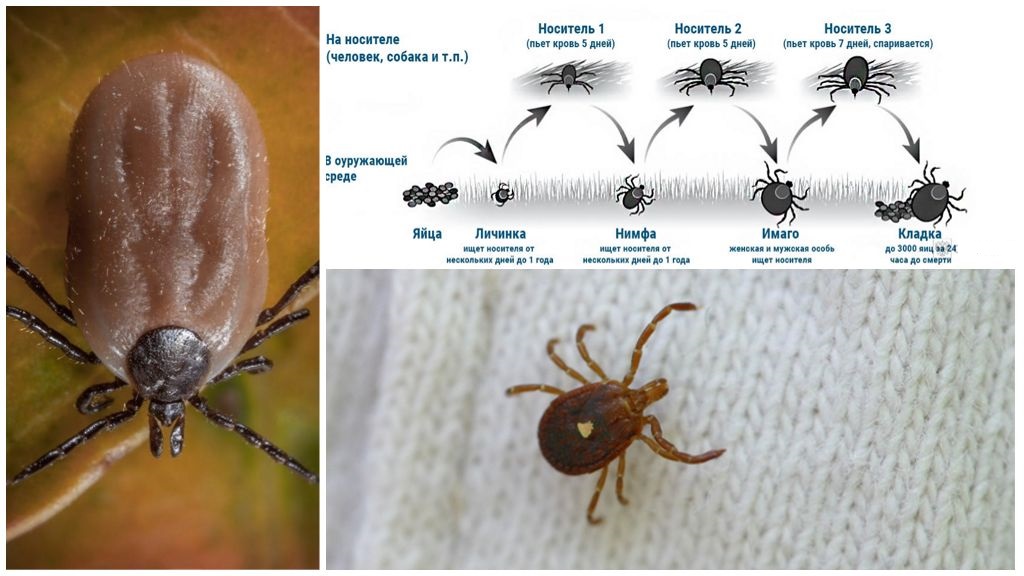
Imago
After starting the mechanism of transformation of tritonimph into an imago, the nymph has serious changes in the body structure:
- the structure of the outer cover is complicated;
- the number of bristles increases;
- in higher species, tracheas, carapace, pteroforms, plates, and much more are formed.
“Full-fledged” ticks are born only after molting the tritonimph. In structure, they are very different from larvae and nymphs.
Generation Generations
Depending on the type and environmental conditions in which ticks are forced to live, the number of generations per year can vary greatly. In some species, the cyclicality of breeding seasons is confined to the seasons of the year or external environmental conditions.
There are species that develop from an egg to death in a year. Others can give up to 20 generations per season. Ixodid ticks are long-lived. These arthropods do not have time to fully develop in 1 season. Their life expectancy is from 2 to 4 years, depending on environmental conditions and good luck in the hunt.
Itchy itch
Refers to sarcoptoid ticks, neglected at the stage of the nymph one of the stages of development. Tick only two stages of the nymph pass before becoming an adult.
The genitals are located where Ixodid ticks are: between the bases of the 4th pair of legs. Males mate with teleonyms (nymph II) on the surface of the body. After mating, the male dies, and the female goes to the epidermis for laying moves and laying eggs.
Female lifespan up to 2 months. During this time, she lays 2-3 eggs a day in the passages under the skin.
Hatched larvae invade the skin and undergo metamorphic changes in the papules, vesicles and passages under the skin.
Important!
Reproduction of scabies itching is possible only on the surface of the skin. In adverse conditions from the outside, itch mites die very quickly.
